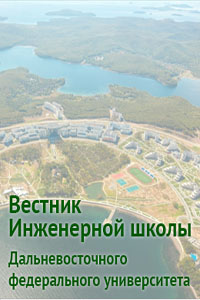Modeling of reinforcement of reinforced concrete elements with composite materials
DOI:
https://doi.org/10.24866/2227-6858/2023-4/121-132Keywords:
reinforcement of reinforced concrete elements, composite materials, simulation of the stress-strain state, deformation diagrams, hypothesis of flat sections, general deformation model of calculation, law of adhesion of reinforcement to concrete, block model of calculation, calculation method, strength, crack resistance, deformabilityAbstract
One of the effective types of additional reinforcement of reinforced concrete elements is external with the use of composite materials. Known methods for calculating the parameters of the stress-strain state of reinforced elements are based on the general deformation and block models, which are applied separately without their interaction. For bending reinforced concrete elements reinforced under load in the tension zone, a method has been developed for calculating the parameters of their stress-strain state, taking into account the peculiarities of crack formation and the redistribution of forces between the main rod and additional external composite reinforcement at all stages of work up to failure. For bending reinforced concrete elements reinforced in the tension zone with external composite reinforcement, a model is proposed for taking into account tension concrete between cracks due to the application of additional stress in the reinforcement. Additional stresses are caused by the appearance of a difference in the relative deformations of the tensile reinforcement and concrete during the formation of a crack of normal separation. After strengthening the bending element in the absence of cracks of normal separation at the moment when the composite reinforcement is included in the joint work, additional external composite reinforcement takes part in the redistribution of forces between the concrete of the tension zone and the reinforcement. The degree of its participation is determined by the geometric parameters, the modulus of deformation and the law of adhesion to concrete. After reinforcement of bent reinforced concrete in the presence of cracks of normal separation (without injection during reinforcement), existing cracks continue to develop similarly to the first and second stages of cracking.
Downloads
Published
Issue
Section
License
Copyright (c) 2023 Far Eastern Federal Univercity: School of Engineering Bulletin

This work is licensed under a Creative Commons Attribution 4.0 International License.

